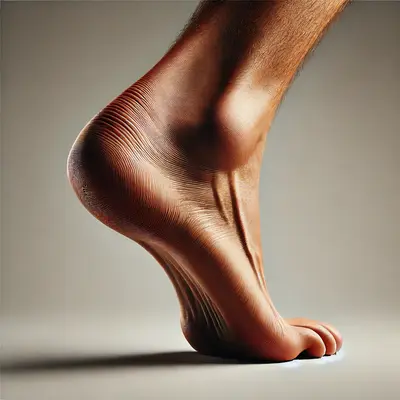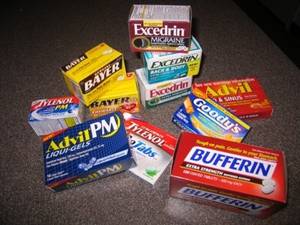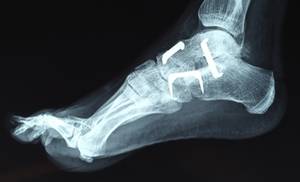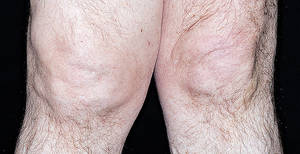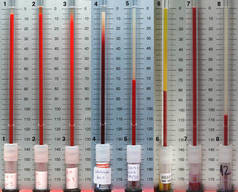Heel pain is one of those conditions that can sneak up on you—especially if you have arthritis. Whether it’s osteoarthritis, rheumatoid arthritis, or even the lesser-known psoriatic arthritis, heel pain can make every step feel like a small mountain. But what’s the connection between arthritis and heel pain, and how can you find relief? Let’s break down the statistics, explore treatment options, and discuss practical ways to manage this condition.
How Common Is Heel Pain in Arthritis Patients?
Heel pain is not uncommon among people with arthritis, particularly those over the age of 50. Recent research shows that up to 40% of people with rheumatoid arthritis report experiencing foot pain, which often includes the heels. Osteoarthritis is another frequent culprit, with nearly 1 in 5 individuals with this type of arthritis experiencing heel discomfort at some point.
Heel pain linked to arthritis isn’t just about inflammation in the joints—it’s often also about biomechanical imbalances. Arthritis can alter the way we walk, leading to increased pressure on the heels. Dr. Benjamin Rogers, a podiatrist with over two decades of experience, notes, “Most of my patients with heel pain due to arthritis aren’t aware that the pain comes from how their body compensates for weakened or stiff joints.”
The Anatomy of Heel Pain: Where Arthritis Strikes
Heel pain from arthritis can present itself in different ways:
- Plantar Fasciitis: This is the most common cause of heel pain in arthritis patients. The plantar fascia is a thick band of tissue connecting your heel bone to your toes, and when inflamed, it causes stabbing heel pain. It’s more likely if arthritis is causing stiffness in the foot.
- Achilles Tendonitis: The Achilles tendon, which runs along the back of your heel, can also become inflamed if arthritis affects the ankle joints. Achilles tendonitis is often linked to activities that strain the tendon, but in arthritis patients, it can happen simply from walking.
- Heel Spurs: People with arthritis are more prone to develop heel spurs, which are calcium deposits that build up due to repeated stress on the foot. These small growths can irritate soft tissue and lead to considerable pain.
The Price of Treatment: What You Can Expect
Treating heel pain caused by arthritis can vary greatly in cost, depending on the severity of symptoms and chosen treatments. Here’s a breakdown:
| Treatment Option | Estimated Cost (USD) |
|---|---|
| Over-the-counter pain relief | $10 – $50 (per month) |
| Custom orthotics | $200 – $800 |
| Physical therapy sessions | $50 – $150 per session |
| Corticosteroid injections | $100 – $300 per injection |
| Surgery (rare cases) | $5,000 – $10,000 |
It’s important to remember that these costs can add up. For example, physical therapy is a highly recommended option, but multiple sessions may be necessary to see substantial improvement. On average, patients may need 8 to 12 sessions, leading to an overall cost of $400 to $1,800.
Treatment Options: What Works for Heel Pain with Arthritis?
Custom Orthotics: One of the most effective ways to reduce heel pain is through custom orthotics. These are inserts designed to correct biomechanical issues caused by arthritis. Dr. Rogers emphasizes, “Proper support is crucial for redistributing pressure away from the heel and reducing inflammation.” Custom orthotics may be pricey, but they provide a tailored solution that can significantly improve mobility.
Physical Therapy: Working with a physical therapist to improve strength, flexibility, and balance can provide significant relief. Therapists often employ stretches to loosen the calf muscles and plantar fascia, which are particularly beneficial for reducing heel pain.
Steroid Injections: For acute flare-ups, corticosteroid injections may provide rapid relief. However, they are not a long-term solution. Frequent use can lead to tissue damage, and for arthritis patients, it is advisable to use these injections sparingly.
Lifestyle Modifications: Lifestyle changes are key when dealing with arthritis-related heel pain. Reducing body weight can alleviate a significant amount of pressure on the heels. For every pound lost, there is a corresponding fourfold reduction in the stress on your feet.
Additionally, staying active but avoiding high-impact exercises is important. Low-impact activities like swimming and cycling are recommended to keep the joints moving without putting excess pressure on the heels. Complete abstinence from alcohol and smoking is also crucial, as both have been shown to exacerbate inflammation and hinder recovery.
What the Experts Say
Dr. Maria Lewis, a rheumatologist, points out that heel pain is often a late-stage symptom for many arthritis patients. “By the time heel pain appears, arthritis has usually progressed beyond the initial joints. It’s important to catch the signs early and take proactive steps to manage them.”
Dr. Lewis also stresses the importance of early diagnosis and a multi-pronged approach. Using a combination of weight management, orthotics, medication, and physiotherapy can drastically reduce heel pain, and in many cases, prevent it from becoming a chronic issue.
Recent Trends in Heel Pain Treatment
In recent years, shockwave therapy has emerged as an interesting treatment option. It works by using sound waves to stimulate healing in the plantar fascia or Achilles tendon. While still relatively new, shockwave therapy has shown promising results, particularly for patients who have not responded to traditional treatments. In a 2021 clinical trial, 70% of participants reported significant improvement after six sessions.
Another growing trend is regenerative medicine, including platelet-rich plasma (PRP) injections. These injections utilize the patient’s own platelets to accelerate tissue healing and have gained popularity for treating both arthritis and tendon injuries. Although the research is ongoing, early results indicate a 50-60% success rate in reducing chronic heel pain.
Our Editorial Team’s Advice for Heel Pain Relief
If you’re struggling with arthritis and heel pain, taking the first step (no pun intended) towards relief is crucial. Start by consulting a podiatrist or rheumatologist to get a proper assessment. Investing in custom orthotics may seem costly initially, but they can make a world of difference in the long run. Similarly, make sure to stay active—but in a way that doesn’t put undue strain on your feet. Low-impact exercises can help maintain joint mobility while reducing pressure on the heels.
Consider all treatment avenues—from physical therapy to emerging therapies like shockwave or PRP injections—and work with your healthcare provider to create a comprehensive treatment plan. And remember, positive lifestyle changes, such as weight management and giving up smoking and alcohol, are just as crucial to reducing symptoms and preventing further damage.
You deserve to live a comfortable and active life, free from the constant nagging of heel pain. Take steps today to address the root causes, and soon you might find yourself back on your feet, ready to take on the day.

